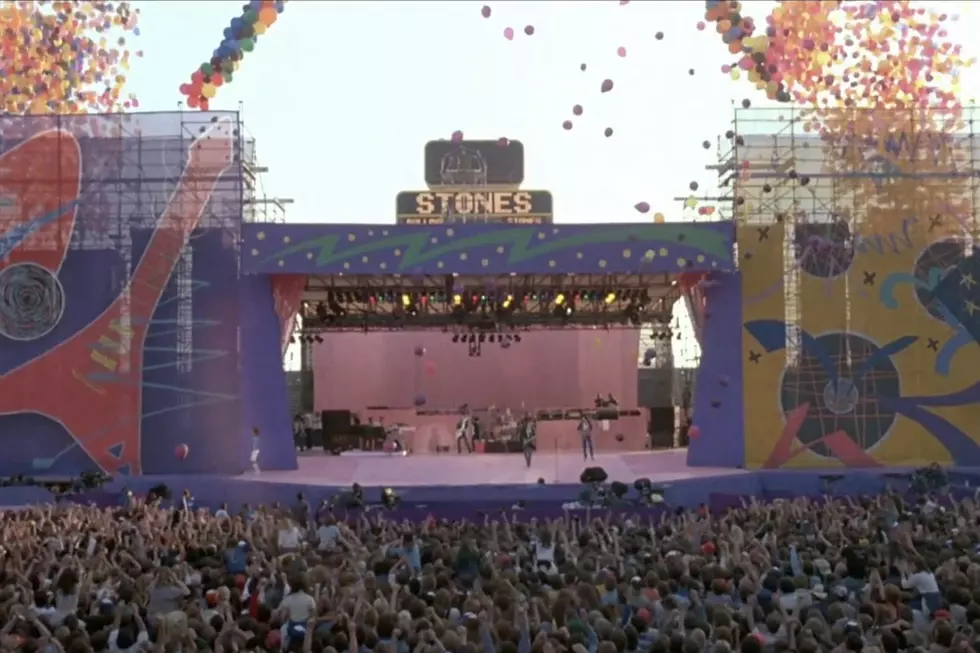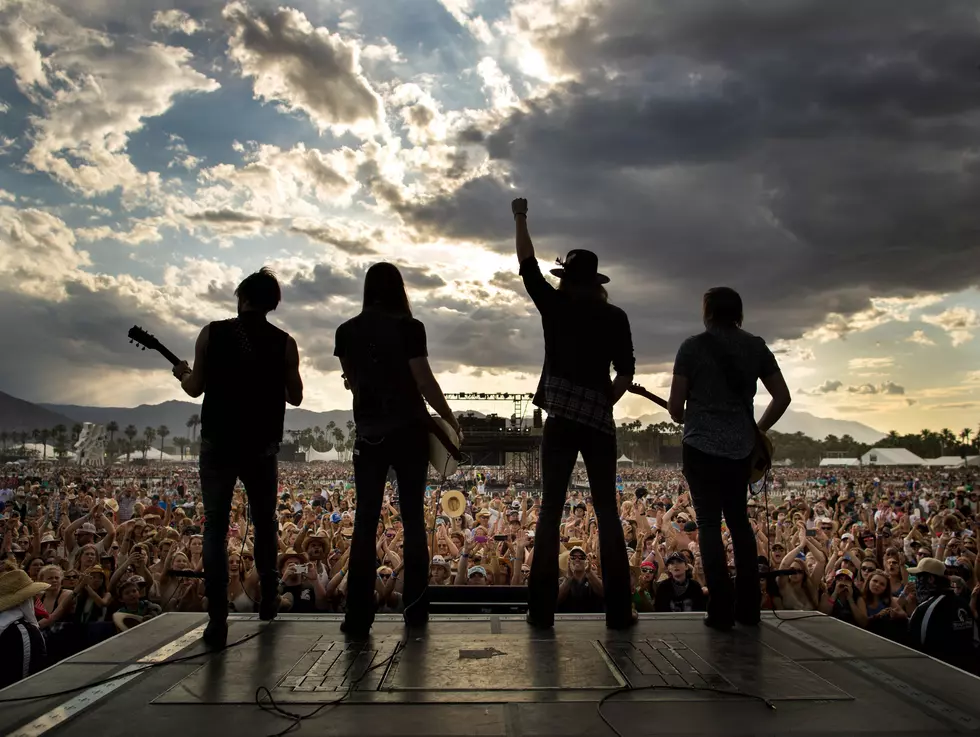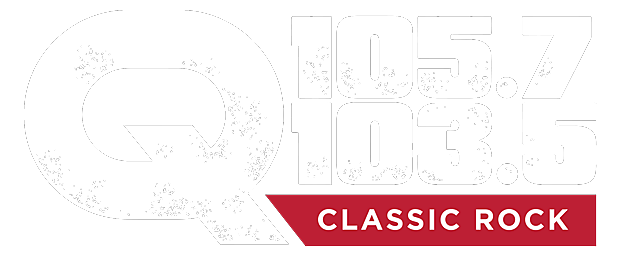
40 Years Ago: A Concert Film Showcases the Rolling Stones’ ’80s Excess
In a lot of ways, the Rolling Stones were built for the big screen.
Performance after compelling concert performance found Mick Jagger's larger-than-life personality paired alongside Keith Richards' suave lead guitar playing, with Ronnie Wood, Charlie Watts and Bill Wyman weaving in between. Take 20 cameras, train them on this band and an audience, and you're bound to capture something magical.
That's more or less the premise behind Let's Spend the Night Together. Released on Feb. 11, 1983, this live Stones concert film contains almost nothing but straight performance footage from two concerts that took place on their 1981 American Tour.
Let's Spend the Night Together begins with footage shot on Dec. 13, 1981 at the Sun Devil Stadium, a massive arena in Tempe, Ariz. As the suns sets behind the venue, hundreds of multi-colored balloons lift into the air and the band plays "Under My Thumb." A stage painted in shades of pink, purple, yellow, red and blue was purposefully designed to retain as much of the audience's attention as possible. Footage from a different concert, shot on Nov. 5 and 6 at the Brendan Byrne Arena in East Rutherford, N.J., follows later.
"Most concerts that took place outdoors at the time were played during the day," Jagger said in According to the Rolling Stones, "probably because it was cheaper, I don't know. So we had the bright, bright primary colors ... and we had these enormous images of a guitar, a car and a record — an Americana idea — which worked very well for afternoon shows."
Band members aligned their wardrobes with the color scheme, too: Jagger dressed in a cotton candy-blue jacket and bright white football-style pants, Watts in a blue and pink striped tank and Richards with a flash of red suspenders.
The show was huge mainly because it simply needed to be. "When you're out there in this vast stadium, you are physically tiny up onstage," Watts added in According to the Rolling Stones. "And when the show gets that big, you need a little extra help. You need a couple of gimmicks, as we'll call it, in the show. You need fireworks; you need lights. You need a bit of theater."
The elaborate spectacle was made all the more impressive considering that not everything was smooth sailing at that point in the Rolling Stones' career. It was the beginning of what would become a tumultuous few years in the relationship between Jagger and Richards, and also a moment where it was suddenly unclear just which Rolling Stones would actually hit the road. Wood was struggling with addiction, too.
Somehow, none of this tension is palpable in the film. "Everybody had wanted Ronnie off the U.S. tour — he was just getting too out of it," Richards said in his memoir, Life, "but I said, no, I'll guarantee him. ... Anything to get the Stones on the road."
They'd released concert films before, beginning with Gimme Shelter in 1970, but nothing of this magnitude: The Stones' 1981 tour was the highest grossing of the year, attracting roughly two million attendees.
Watch a Trailer for 'Let's Spend the Night Together'
Let's Spend the Night Together was directed by Hal Ashby, a multi-Oscar nominee whose resume then included films like 1971's Harold and Maude, 1973's The Last Detail, 1975's Shampoo, 1976's Bound for Glory and 1979's Being There. But Let's Spend the Night Together represented the first foray into musical film for Ashby, a longtime Rolling Stones fan. He'd go on to direct the Solo Trans project by Neil Young, a few years later.
Despite this initial inexperience, Ashby captured both the big elements of the show — like a seemingly never-ending line of beauty pageant women who take over the stage, or the moment Jagger darts into the audience himself and appears to be swallowed up by fans — as well as the more personal details: There was Wyman's sheepish grin as he watches Jagger perform a particularly crazy dance move, and Jagger's direct eye contact with the camera.
In another spot in the film, while the Rolling Stones play "Time Is on My Side," boyhood photos of the band members and footage of their earliest performances is shown. More material is intercut, showing the group gearing up backstage. In one memorable scene, Wood gets his eyeliner applied; in another, Jagger checks his watch for the time and encourages those around him to get a move on.
Most of Let's Spend the Night Together, however, is rightfully reserved for straight footage of the concert. The set list includes previous hits like "Beast of Burden," "Miss You," "Jumpin' Jack Flash," "(I Can't Get No) Satisfaction" and, of course, "Let's Spend the Night Together" – plus several songs from the Stones' then-new album Tattoo You, like "Little T&A," "Hang Fire" and "Start Me Up." Ian Stewart, Ian McLagan, Ernie Watts and Bobby Keys are featured in addition to the core Stones.
The film pulled in $3.8 million at the box office, while earning praise for its vibrant color and high quality. A New York Times critic deemed it "probably the handsomest rock 'n' roll movie ever made."
At the end, Jagger appears in a giant crane above the audience, still gyrating to the music below him. When he comes down, he disappears backstage for a moment before returning draped in a multi-national flag honoring both the U.S. and Great Britain. More balloons are released as the crowd cheers and Jimi Hendrix's version of the "The Star Spangled Banner" plays over the credits.
For those who missed the '81 tour, don't fret: As Jagger later promised, Let's Spend the Night Together gives "a feel of what it’s like to be there."
The Best Rock Movie From Every Year
Real-Life ‘Spinal Tap’ Stories: Rolling Stones
More From Q 105.7








